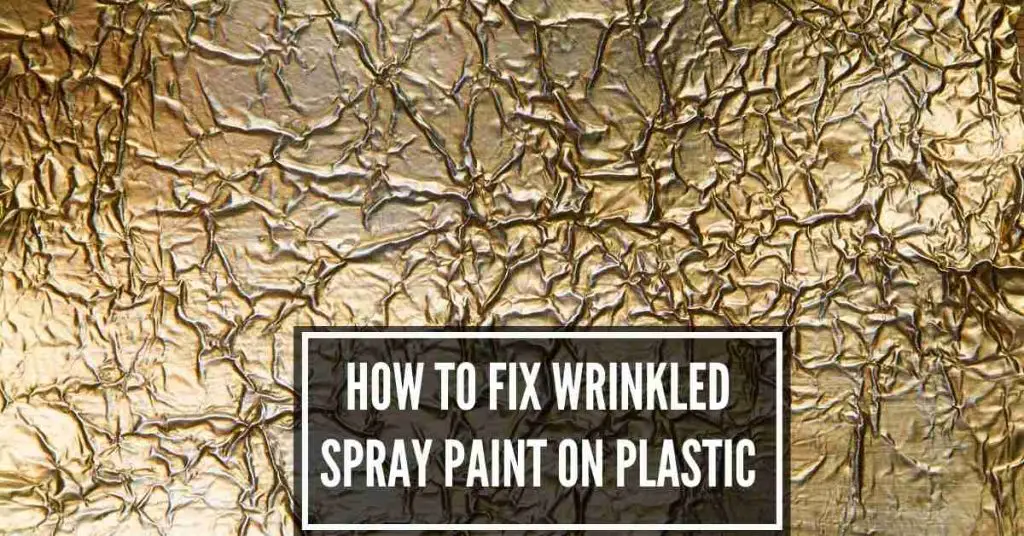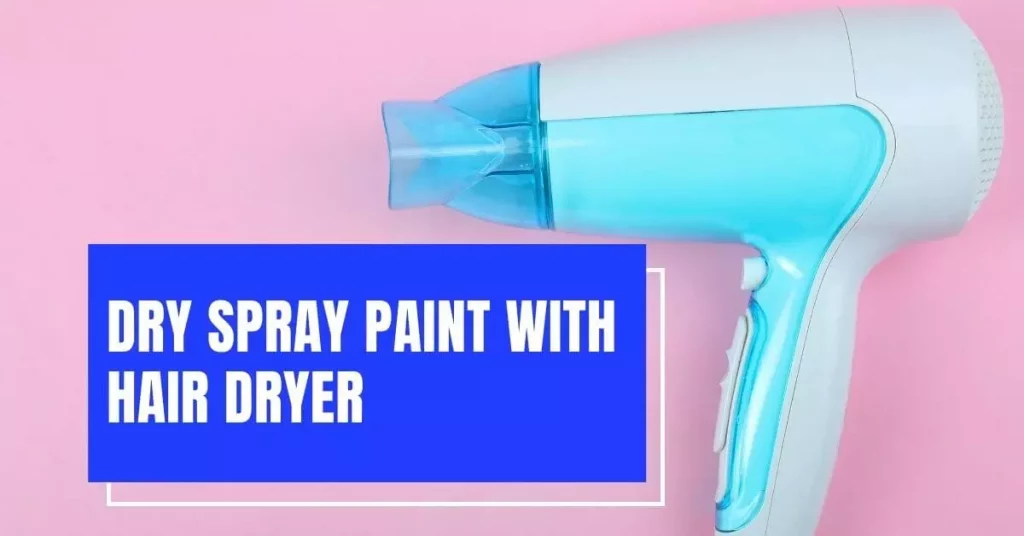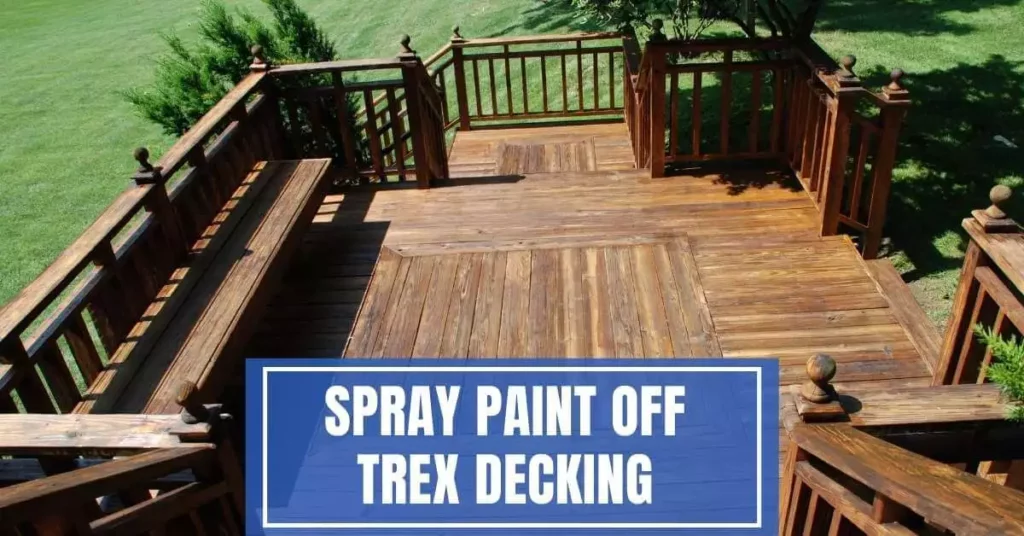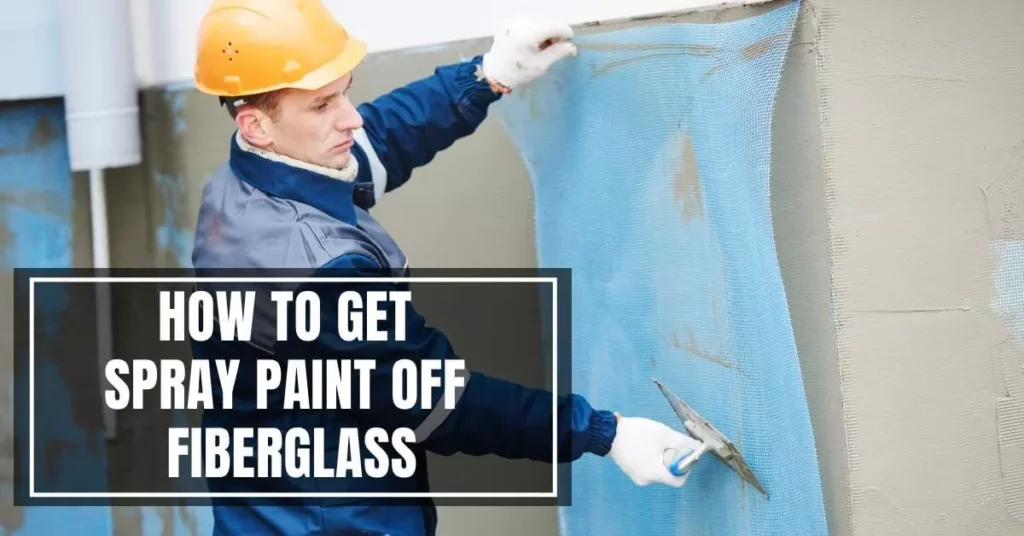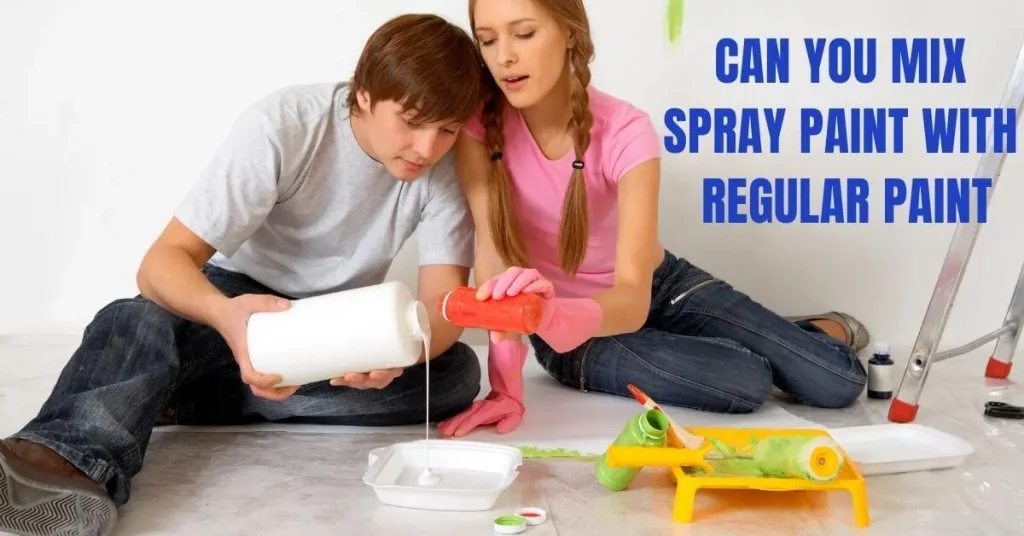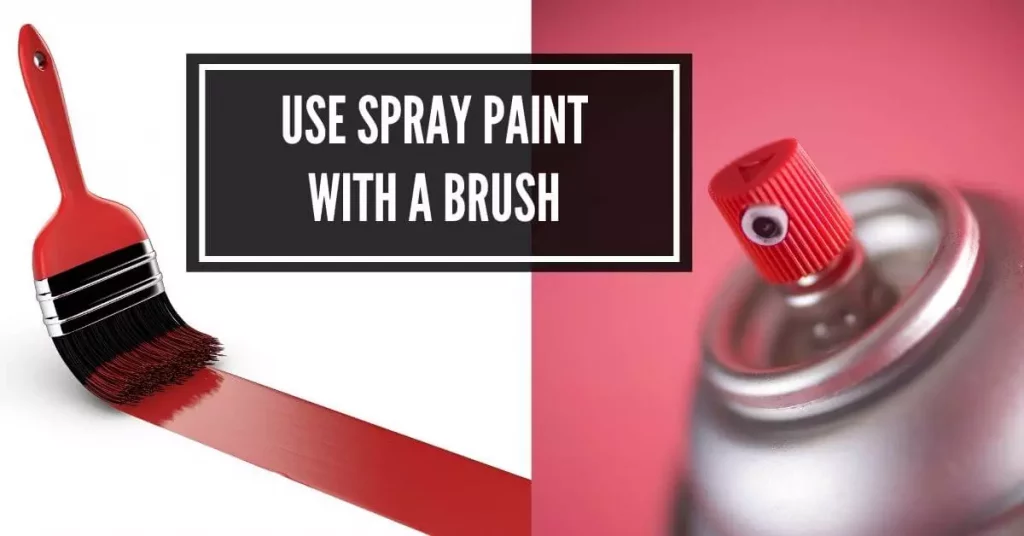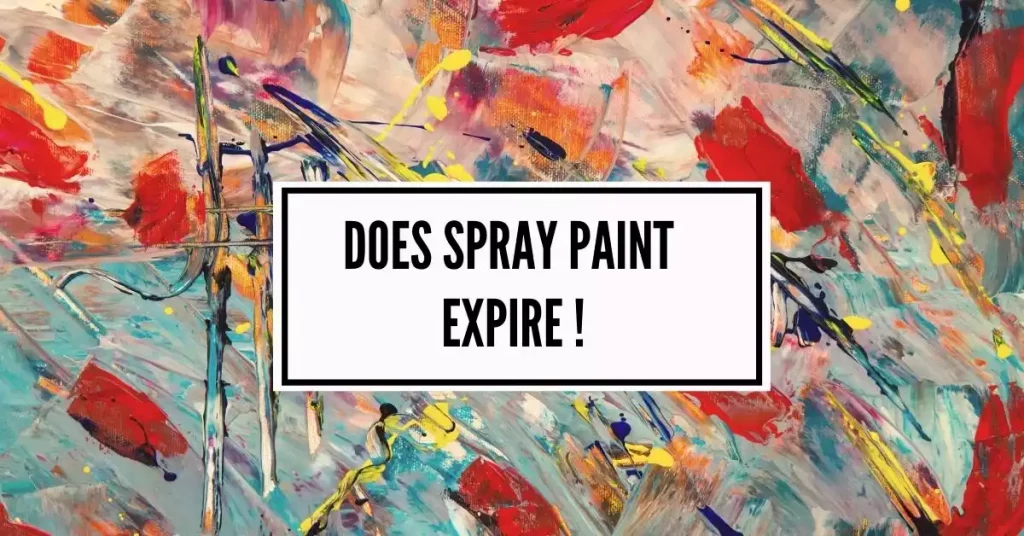If you’ve sprayed an object with spray paint and are dismayed to find it looks wrinkled or creased afterward, don’t despair!
I’ve recently spray-painted on a plastic chair, and now it’s covered in wrinkles. So, then I have tried to find what causes spray paint to wrinkle. So, I did a little research and found out several causes.
Also, find plenty of ways to fix dusty spray paint on plastic so that your project still looks great. Here I will share some tips on how to fix wrinkled spray paint on plastic in no time at all!
Table of Contents
What Causes Spray Paint Getting a Wrinkly Appearance?
Spray paint wrinkles are one of the biggest nuisances when it comes to spray painting projects. If you’ve ever experienced this problem, you know just how frustrating it can be! But have no fear; several common causes can easily explain why spray paint wrinkled up like an accordion! Here are twelve possible causes of spray paint wrinkles:
1) Plastic Not Dry Enough
Many types of plastic take a very long time to dry. In fact, some plastics will never fully cure and remain tacky for years after application. In addition, applying spray paint to a plastic surface before it is completely dry will wrinkle when dried. To prevent wrinkling, allow your plastic item to dry as long as recommended by its manufacturer before painting it with spray paint.
2) Temperature and Humidity
Spray paint is particularly sensitive to temperature and humidity changes. As a result, cold or humid conditions can cause spray paint wrinkling after it dries. A colder color may also appear more susceptible to wrinkling than a warmer one because of its higher saturation.
To minimize wrinkles when applying spray paint on cold days, try preheating your surface with a blow dryer and spraying in warm weather or on a warm object like an asphalt driveway.
3) Windy Conditions
Spray paint can’t handle wind well. In high winds, it dries before you have a chance to move it where you want it. If your painting project requires that you work in an open area (think: sky), you might want to look into acrylic or enamel instead. These paints dry slower than oil-based paints, which means they’re less likely to experience issues from windy conditions. It’s also best not to apply your paint on days with strong crosswinds—you don’t want your hard work to be ruined by a simple gust of air!
4) Too Much or Lack of Pressure
A common cause of wrinkle paint colors is too much pressure when spraying. Your hand will naturally provide a small amount of pressure as you push down on your spray can, but if you press too hard, you could end up with wavy or uneven coverage on your wall.
Using too much paint, or applying it with lack of Pressure, can also result in these problems. If you’re feeling like your paint isn’t spraying well, stop for a second and test it by trying to write something (like Hi) using one letter per pull.
The first few sprays should be very light, but subsequent sprays should get darker with more even coverage. If each pull creates different coverage on your wall then there’s likely an issue with applying too much or lack of pressure while spraying.
5) Over-spraying
If you’re not careful, your spray paint can get wrinkled before it even hits your target. When you over-spray, excess paint may drip down the can and pool around its base, causing it to deform and come out of shape when you pull back on it to spray. This is especially true for wide-mouth cans—if you’re using one, make sure your grip isn’t too close to its opening.
6) Leaving the Can in the Sun
Heat can make containers (like spray paint cans) swell and warp, which can lead to wrinkling. Leaving a spray paint can under the sun is not a good idea. If you’re planning on using it right away, just know that high heat can wrinkle the paint or affect its performance.
The best way to prevent heat-related wrinkles is simply to store your cans in cool, dry areas until you’re ready to use them—and if you must store them for an extended period, keep them out of direct sunlight.
Read Me: Best Spray Paints for Guitar
7) Moisture
Spray paint is designed to dry quickly, but moisture can mess with that. Temperatures over 80 degrees Fahrenheit or below 40 degrees Fahrenheit can cause moisture blistering. Since spray paint is applied outside, spray on an overcast day if possible.
8) Application Methods and Inadequate Dry Time
How you apply spray paint can make a difference in how it lays on your item. If you spray too much paint in one layer, it will inevitably cause wrinkles. The less layers of paint that are applied to your piece, especially a thick layer at once, the better off you’ll be. Also, keep in mind that if you’re putting a new coat over an old one without allowing adequate time for proper drying, it could result in wrinkles.
So, make sure that both coats (or all) of your project have been allowed to dry properly before applying another coat. Better yet, don’t apply a second coat until at least a day after applying the first, and then test out how well both coats adhere to each other before starting on more pieces or continuing with any given painting project.
9) Failure to Shake Can
Spray cans are made to use with solvents, so if you don’t shake them before spraying, you could end up with streaks. Read instructions thoroughly and make sure to shake your spray can at least 30 seconds before each use.
10) Surface Contamination
During application, your paint surface might not be completely stable. If you don’t correctly prime or prepare your surface before painting, you could end up with dusty spray paint. In addition, unstable surfaces will have a hard time releasing excess paint and may cause clear coat wrinkles. To keep your paint job wrinkle-free, make sure to clean and sand all surfaces thoroughly before application.
11) Incompatible Products
Some spray paints will literally not adhere to certain surfaces. If you use an incompatible product, you’ll likely end up with a sagging or wrinkled finish. The wrong primer can also cause problems; spray paint is usually only intended for use on relatively smooth surfaces, so if you don’t prime it properly, you could end up with peeling and wrinkles.
12) Expired Spray Paint
Does spray paint expire, and is it one of the causes of winkled? Yes, spray can aging also be a cause of paint crackle. Older cans have been known to develop issues when used in cold weather.
7 Items You’ll Need to Prevent Wrinkling in Spray Painting Job
To get rid of spray paint from plastic, you’ll need a few basic materials and supplies. While the exact components will vary depending on your situation, these are the most common tools and items to fix paint crackle from plastic products or surfaces.
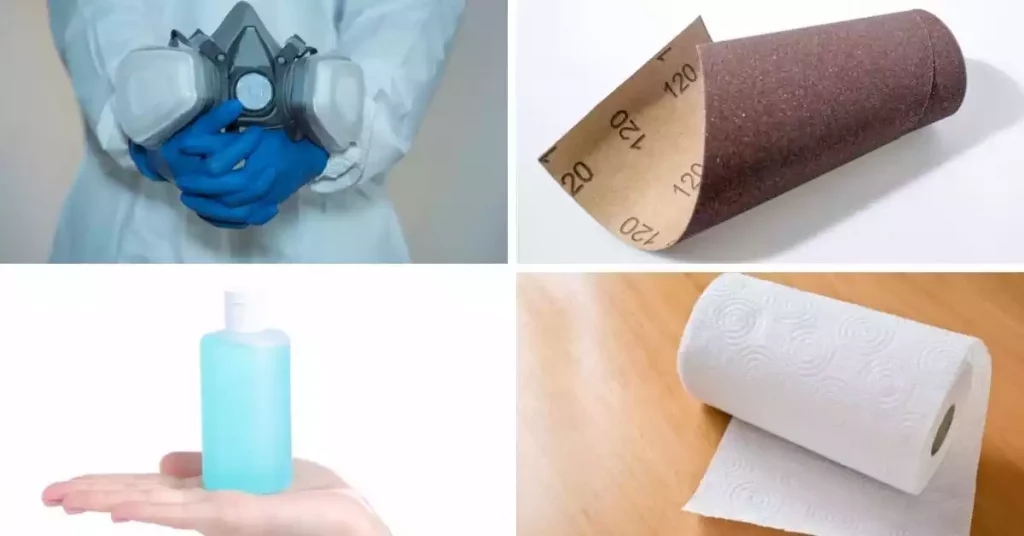
1) Use a Respirator Mask
Using a respirator mask when spraying plastic will prevent you from inhaling any harmful fumes. You can purchase one at any hardware store for cheap, and it’s better to be safe than sorry.
2) Gloves
Depending on how much paint you have on your hands and how long it’s been there, you may want to wear gloves. If you don’t have gloves handy, try using dish soap and warm water as a replacement. Add a teaspoon of mild detergent (like dish soap) for every cup of warm water; stir until it dissolves. Soak your hands in the mixture for at least five minutes, then remove with lukewarm water.
3) Long Sleeves and Pants (Optional but Recommended)
While it’s important that you don’t overspray, too much paint can end up getting where you don’t want it. When working with spray paint, you should always wear long sleeves and pants. Overspray has a tendency of making its way around your clothing and skin, so wearing these items will help prevent unwanted coloring.
4) Sandpaper
Sanding is great for removing paint, but it’s also helpful for smoothing out plastic before painting. Sand with fine-grit sandpaper after you’ve applied primer and again before applying paint. This will help ensure a smooth finish that looks great for years. Use coarse-grit sandpaper if you have large pieces of plastic and need a quick way to make it look smooth again—no primer or paint required!
5) Acetone
Before you throw away a piece of damaged plastic, please give it a thorough scrubbing with nail polish remover or acetone, which is a powerful solvent that can literally melt plastic and remove painted-on logos. You might be surprised by how well it works!
6) Rubbing Alcohol
This is an especially important item because it dissolves the chemicals in spray paint. These chemicals can eat away at certain surfaces, so if you try to clean it off without alcohol, chances are that your plastic will end up looking more like a Jackson Pollock painting than a laptop or other such surface. So, grab yourself some rubbing alcohol and get ready to get cleaning!
7) Wet Rag or Paper Towel
A soft, absorbent cloth or paper towel should work well. The rag will help soak up as much of the excess paint as possible. If you’re able to get some water on it—even better! However, make sure that your rag doesn’t have any loose threads that could tear into your plastic.
9 Surprising Ways to Fix Spray Paint on Plastic
If you’ve ever made the mistake of spraying paint on plastic, you know that it can be challenging to clean off once it dries. But did you know that there are actually ten different ways you can fix wrinkles in spray paint? Even if you don’t know much about painting you can restore its original color and shine. I’ll show you how to fix uneven spray paint.
1) Soak A Towel in Water
The first way to fix wrinkled spray paint is to soak a towel in water and lay it over your plastic for 5-10 minutes. The water will seep into and relax your paint, smoothing it out again. Then wipe off with a clean, dry towel, and you should be able to use your item as expected. If you do not have time or patience, other methods can also achieve similar results!
2) Remove the Paint
If you’re working with a piece of metal or plastic, chances are you won’t have too much trouble removing dried spray paint. All you need is acetone (nail polish remover) and an old rag or paper towel—apply a bit of acetone to your rag and wipe it onto dried paint; repeat as necessary. Once you’ve removed most of it, use another clean rag soaked in acetone to wipe away any remaining bits of color. You can buy nail polish remover for about $3 at any major department store.
3) Sand down the Plastic
Sand down any imperfections or rough patches with fine-grit sandpaper. The smoother and cleaner your plastic, the easier it will be for paint to adhere. In fact, consider lightly sanding first even if you don’t notice any issues with your plastic; primer will stick better if there are no bumps. Then wipe away excess dust and debris from your work surface.
4) Clean Off the Dust
The most important step in fixing paint wrinkles is getting off as much dust and dirt as possible. This may seem obvious, but you’d be surprised how many people skip over it. Just take a minute to wipe down your piece with a wet rag or paper towel. You don’t need anything fancy, just something you can use again later without worrying about ruining your furniture or countertop. Once that’s done, take a look at what’s left—if there are still some stubborn spots, don’t force them; they’ll come off later.
5) Mask It Up
Masking tape is great for blocking off portions of a project when painting; however, it also makes an excellent solution for fixing wrinkles in your plastic spray-paint project.
All you need to do is lay down strips of masking tape all over your piece of plastic and then apply another layer of spray paint over the top. This will prevent paint from landing in unwanted areas. Also, if you want to make sure that certain things stay painted while others do not.
6) Add A Primer If Necessary
If your spray paint is wrinkling and bubbling up, it’s likely because you didn’t use a primer. When applied before your chosen paint, primer helps create a smooth and even surface for your project. If you neglected to prime your plastic beforehand, do so now and then let it dry.
Then take another can of spray paint (use a different color) and try again. Now your paint will last longer and stick more effectively. You may need to prime two or three times before achieving an even coat that isn’t wrinkled or bubbled.
7) Spray Several Thin Coats
One of the easiest ways to fix blistered spray paint is to avoid getting it in that state in the first place. It might seem counterintuitive, but spraying several thin coats instead of one heavy coat can help prevent wrinkles.
The thinner layers will dry faster and shrink less, meaning you’re far less likely to get bubbles or ripples. Always follow instructions – if you’re working with new paint or surface and aren’t sure how many coats are ideal, ask at your local hardware store.
Mistakes do happen when working with spray paint; keeping a phone picture of your project as you go along can be invaluable in assessing potential damage if it does occur.
8) Let It Dry In Between Each Coat
There’s no way around it—spray paint is a messy process. One of spray painting’s downsides is that sometimes when you apply multiple coats, an underlying layer gets wrinkled and bunched up.
If your spray paint ends up looking like crumpled cellophane, try letting it dry for about 20 minutes before applying another coat. That will give you enough time for it to dry and prevent your new layer from distorting your earlier work. When in doubt, just let it sit! A little extra waiting can save you big headaches later on.
9) Blot with Paper Towel or Dry Towel
Most spray paints are a solvent-based solution; they’re also quite volatile, meaning that any extra moisture can cause it to wrinkle up. So, as soon as you’ve finished painting a surface with spray paint, blot off any remaining drops of excess paint with a paper towel or dry towel.
By getting rid of all these extra drops of paint before they have time to dry and cure on your project surface, you’ll end up preventing wrinkles.
How Can I Prevent This from Happening Again?
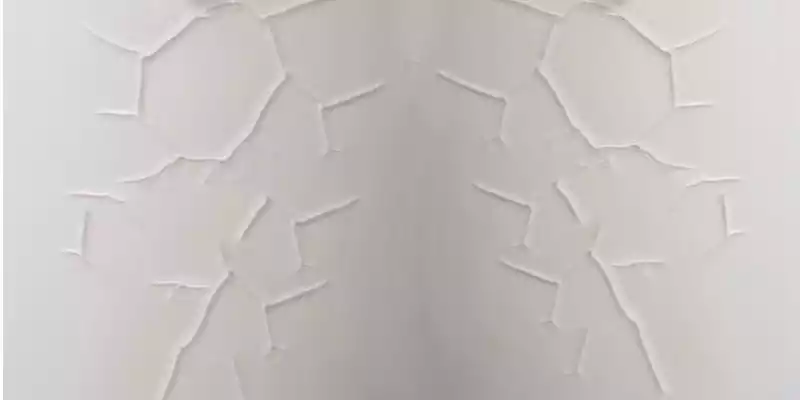
There are many things you can do to prevent that from happening again and look at these tips to find the best way to fix this issue on your next project. One simple way to avoid getting wrinkles in your paint job is to apply two coats instead of one.
Many artists choose not to do a second coat because they like how their colors blend when sprayed on top of a dried coat. If you’re interested in doing a second coat, make sure that your first layer is completely dry before spraying again—and don’t apply more than two coats unless you absolutely have to. Otherwise, you might end up with an unpaintable mess.
FAQ
How Do You Remove Spray Paint Streaks?
The best way to remove spray paint from a surface is to use a chemical solvent. The most common solvent for removing paint is acetone. You can find cans of it in the hardware or paint department of any store. You can also purchase it at an auto parts store.
Why Is My Rustoleum Spray Paint Wrinkling?
One of the most common reasons for Rustoleum spray paint wrinkles is the paint’s application. If you applied too much paint, it may have been too thick and caused wrinkles to form. Rust-oleum paint should be used on flat surfaces and does not need to be applied on porous surfaces like wood or metals. If you apply it on these types of surfaces, then the paint will cause your surface to wrinkle or flake off because it is not strong enough. To prevent this from happening, you can use a primer that makes the surface more resistant to scratches and water damage.
Why Do You Have to Wait 48 Hours to Recoat Spray Paint?
The answer to this question is related to the paint’s coating. Most paints are designed to be applied over a period of time in order to allow the paint to properly adhere to the substrate. This leaves the paint vulnerable to wear and tear for up to 48 hours after application.
The second coat of spray paint will not only cover any visible markings left by the first coat but will also protect the paint from wear and tear for an extended period of time.
How Do You Keep Spray Paint from Getting Sticky?
Spray paint can be difficult to work with because it is often sticky and hard to keep from sticking to the hands. Spray paint should be applied quickly and evenly in a single layer to avoid this. It can also help to use a rag or paper towel to wipe off excess paint after the first layer is sprayed. High gloss spray sealant also be an easy way to clean off.
Why Did Second Coat of Spray Paint Wrinkle?
There are a few reasons why the second coat of spray paint might wrinkle. One reason is that the first coat of paint was too thick and caused the paper to stick to the can. The second coat of paint then flowed over the top of the first coat, causing it to wrinkle.
Another reason is that the second coat of paint was applied too quickly. When you apply a second coat of spray paint too quickly, the solvent in the paint evaporates more quickly, which causes it to become thicker and more viscous. This then causes wrinkles because it cannot flow as easily over the surface.
How to Fix Wrinkled Clear Coat?
Clear coat is a type of paint used on cars to seal in color and protect it. Unfortunately, the clear coat can become wrinkled over time, fixed by using rubbing compound or other polishing agents. The best way to fix paint wrinkles after clear coat is to remove the coat and apply a new layer of protective paint.
Conclusion
That’s it! Congratulations! You have finally learned how to fix wrinkled spray paint on plastic. Quite simple, isn’t it?
Many people don’t think twice about using spray paint on plastic because they believe it won’t cause any damage. However, if you aren’t careful, you could wind up with an ugly mess that’s difficult to clean up and repair. Using the right type of paint, following proper application instructions, and taking other steps can help ensure your spray paint job stays intact and lasts a long time to come.
Happy painting!

Even though I have 10+ years of experience in the painting business, I am always trying to learn the latest coloring methods. I have been into colors since my teenage days. I spent a lot of time experimenting with new painting methods on multiple surfaces. Now, I want to spread my knowledge through my blogs and articles.

